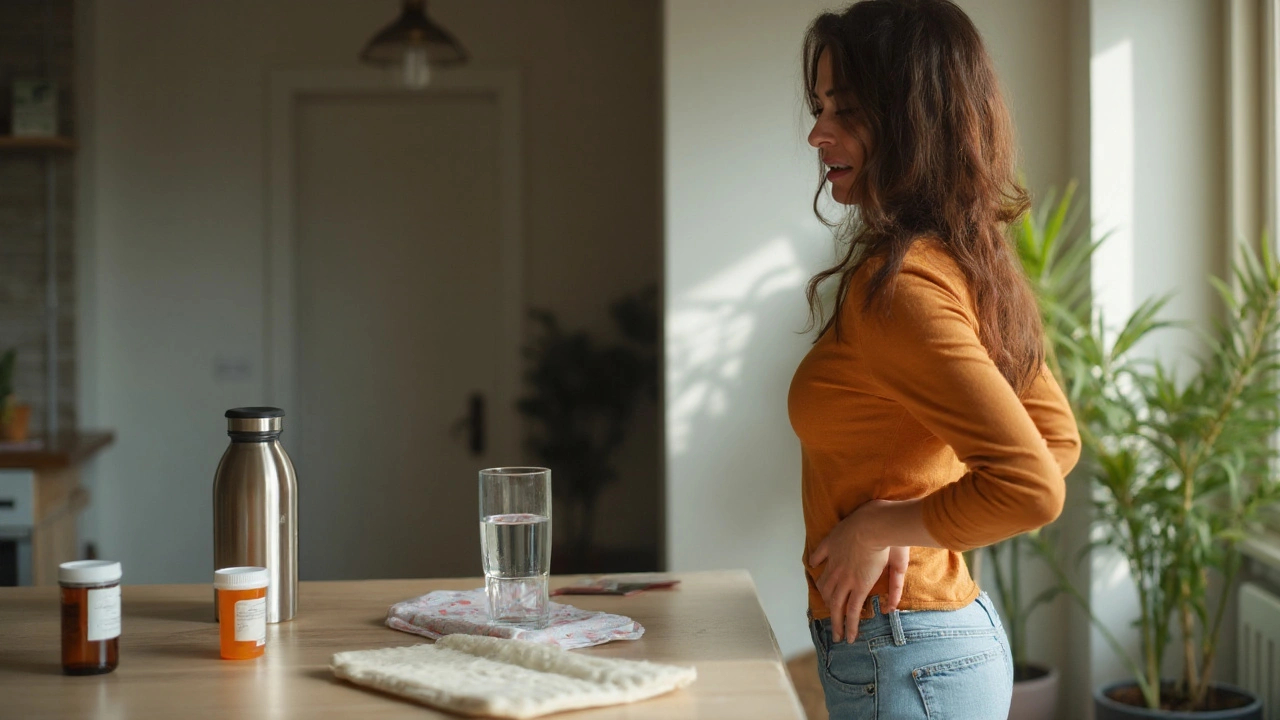UTI Back Pain: What It Is and How to Fix It
If you’ve ever felt a sharp ache in your back while dealing with a urinary tract infection (UTI), you’re not alone. Many people think back pain only comes from muscles or the spine, but a UTI can irritate the kidneys and send pain up into the lower back. Knowing the link helps you act faster and feel better sooner.
How a UTI Leads to Back Pain
A UTI starts in the bladder or urethra, but if bacteria travel up the urinary tract they can reach the kidneys. The kidneys sit just under your rib cage, and when they’re inflamed they radiate pain to the flank and lower back. This pain often feels dull or throbbing, and it can get worse after you drink a lot of fluids or try to move.
The same bacteria that cause the infection also release toxins that irritate nearby nerves. Those nerves send pain signals to the back muscles, so you might think you’ve strained something when it’s actually an infection. Common signs that back pain is tied to a UTI include a burning sensation when you pee, frequent urges to go, cloudy or foul‑smelling urine, and sometimes fever.
When to Seek Medical Help
Most UTIs are easy to treat with a short course of antibiotics, but you should see a doctor right away if you notice any of these red flags:
- Back pain that’s severe or doesn’t improve after a day of rest
- Fever above 100.4°F (38°C) or chills
- Nausea, vomiting, or feeling very tired
- Blood in the urine or intense urgency
These symptoms could mean the infection has reached the kidneys (pyelonephritis) and needs prompt treatment. Delaying care can lead to more serious kidney damage.
While you’re waiting for a doctor’s appointment, you can do a few things at home to ease the pain:
- Drink plenty of water – aim for at least eight glasses a day to flush bacteria out.
- Take an over‑the‑counter pain reliever like ibuprofen, unless you have a condition that prevents it.
- Apply a warm pack to the sore area for 15‑20 minutes a few times a day.
These steps won’t cure the infection, but they can make the discomfort more manageable.
Preventing future UTIs is a big part of keeping back pain at bay. Simple habits like wiping front to back, urinating after sex, and avoiding harsh soaps can reduce the chances of bacteria entering the urinary tract. If you’re prone to recurrent infections, talk to your doctor about low‑dose antibiotics or a probiotic plan.
Bottom line: back pain and a UTI often go hand in hand because the kidneys sit right near the back. Recognizing the connection, watching for warning signs, and getting timely treatment will get you back to feeling normal faster. Stay hydrated, act quickly when symptoms appear, and keep those preventive habits in place – your back will thank you.
Bladder Infection and Lower Back Pain: Causes, Red Flags, and Relief
Lower back pain with a bladder infection? Learn how UTIs can trigger back pain, red flags for kidney infection, what to do today, and how to prevent repeats.
- 19
- Read More
